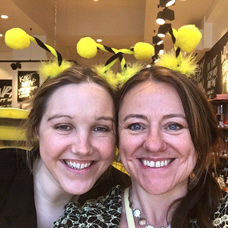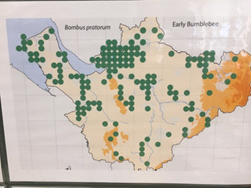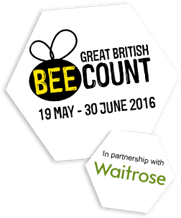Chester Zoo Bee Event - Wildlife Connections
Helen Tandy, Partner, Chartered Financial Planner, Castlefield Advisory Partners
I have been involved in the Chester Zoo Wildlife Connections programme since the start. The most recent event I attended relates to one of the species from the list closest to my heart, the Bee. I have been campaigning to protect bees for the last few years through the Friends of the Earth’s ‘Bee Cause’ campaign. When not giving ethical financial advice you might find me dressed as a bee, wearing clothes with pictures of bees or wearing bee jewellery - even my Castlefield business cards are personalised with a honeycomb.

The Zoo event had three speakers from Liverpool’s World Museum. Its objective was to learn about the different types of bee and how to identify them, followed by a trip into the Zoo to put it all into practice.
I did pick up some fantastic information. Pollinators - i.e. butterflies, hover flies and bees - all have a preference for different plants, so it's important that we don't lose any of these species. They are important to agriculture: for example, apples, raspberries and tomatoes all rely upon pollinators and without these we would have a very restricted diet.
Around £18.6 million is spent purchasing just four UK varieties of apples each year and without the pollinators it would cost the industry a huge amount of money to pollinate these manually.
It is important to know how we are doing with bee populations so conservation work can be targeted. The Museum provides sessions on the identification of bumblebees, wasps and solitary bees, which take place within the museum where people can examine bees under the microscope. They have been mapping bees in Cheshire for the last 3 years, funded by the Zoo.
If you are looking to attract certain types of bees:
-
bumblebees like long flowers
-
The small garden bumble is the main pollinator of runner beans
-
The common garden bumblebee is the only pollinator of clover
Tawny bees are found in lawns - their presence is a sign of a good healthy lawn. They burrow down and then tunnel offshoots. Garden bees nest on grass lands, using the dry grass to make nests.
The experts believe the reason for the population decline is only in a small way attributed to climate change. The major issue is habitat loss and pesticides. Pesticides impact on a bee’s ability to find its way back to the nest, and they are particularly susceptible to chemicals.

The map is of bumblebee sightings in Cheshire and Wirral.
Museums Atlas Project
They are monitoring Cheshire bees, wasps and ants.
They have been working with the Zoo for the last 2 years.
The map has lots of gaps due to the large amount of agriculture/ farmland in the region.
The aim is to fill in the missing areas.
The survey is done by static traps.
They provide the data to the National Biodiversity Network.

Great British Bee Count- starts 19th May
Friends of the Earth (FoE) does the same as part of its national Bee count - Great British Bee Count - and you can sign up here:
This year’s count starts on 19th May and runs until 30th June.
The FoE bee count recorded 194,280 bees in 2015. Its aim was to be the largest bee citizen science project. There are already 20 UK bee species extinct, leaving around 267 species at risk.
So to sign up to count the Bees and for more information on how you can click here.
Thanks
Helen Tandy
Castlefield Advisory Partners and Chester & District Friends of the Earth Bee Cause Campaigner
#saveourbees
#greatbritishbeecount
#beecause